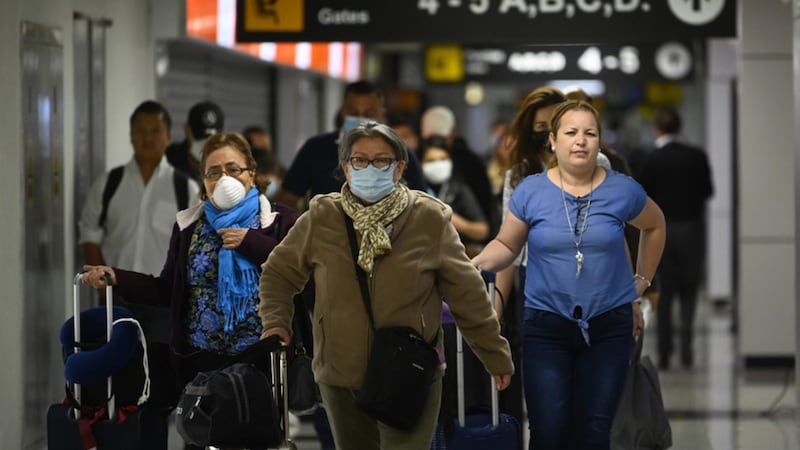Two months and two weeks after the first coronavirus case was identified in the United States, nearly 200,000 cases have been confirmed, and more than 4,300 people have died from the virus.
Since that first case, confirmed on Jan. 20, 2020, many of the assumptions about COVID-19 have been confirmed by the scientists studying the virus. But other assumptions have not panned out.
Here are three things we thought we knew about the virus and what has changed.
1. What we thought: Those most likely to die from complications of the COVID-19 virus are older and/or have chronic medical conditions.
What we’ve now learned: While we realized early on that older patients tend to have a worse outcome if they are infected with the virus, it took us longer to understand that younger adults are also being infected and the number of those infections is not insignificant.
According to the Centers for Disease Control and Prevention, one-fifth of the current cases in the United States are among people between the ages of 20-44.
Why do some people get critically ill with the virus and others don’t? In older patients, a weakening immune system makes fighting off the virus difficult. As for those who are younger and fall seriously ill, scientists are looking to see if genes may play a role, according to an article in Science magazine.
Studies are looking at the role of genes that tell the body’s cells to build receptors, which are areas on the outside of a cell that respond in a certain way to a particular substance. The substances can be hormones, neurotransmitters – which are chemicals the body uses to send messages to nerves, muscles or organs -- or viruses.
The particular receptors being studied are known as ACE2 receptors. The coronavirus attaches itself to ACE2 receptors to gain entry into the body.
According to the report in Science, Jean-Laurent Casanova, who specializes in identifying rare genes that can make healthy young people susceptible to certain serious diseases, is compiling information from around the world on young people who have developed a COVID-19 infection that is serious enough to get them admitted to intensive care.
“We study exclusively patients who were previously healthy” and under 50, as their serious COVID-19 illness is more likely to have a genetic basis, Casanova explained.
2. What we thought: You had to have symptoms of the virus to be able to transmit the virus.
What we’ve now learned: According to the CDC, people are believed to be the most contagious with any coronavirus when they are the sickest – meaning when they have a high temperature, are coughing or are having trouble breathing.
However, with COVID-19, studies are showing that people appear to be able to spread the virus when they are presymptomatic – meaning they are spreading the virus when they are showing no symptoms, usually a day or two before they fall ill.
“This helps explain how rapidly this virus continues to spread across the country,” Dr. Robert Redfield, director of the Centers for Disease Control and Prevention, told National Public Radio in an interview broadcast on Tuesday.
According to a story STAT News, Gabriel Leung, dean of medicine at the University of Hong Kong, has estimated that about 40% of COVID-19 cases transmit before symptoms develop.
A study of worldwide cases conducted by researchers in China, which has yet to be peer-reviewed, suggested a similar percentage of cases were transmitted by people infected with COVID-19 who have mild or no symptoms of the virus.
3. What we thought: There is no benefit in wearing surgical or other protective masks for people who are not sick with COVID-19.
What we’ve now learned: The Centers for Disease Control and Prevention is considering a plan to urge Americans to cover their faces in an attempt to slow the spread of the COVID-19 outbreak, according to a story in The Washington Post.
At the beginning of the COVID-19 outbreak, the CDC said it “does not recommend that people who are well wear a facemask to protect themselves from respiratory diseases, including COVID-19."
”You do not need to wear a facemask unless you are caring for someone who is sick (and they are not able to wear a facemask)," the CDC’s website says. “Facemasks may be in short supply and they should be saved for caregivers.”
According to the Post, if the CDC updates its advice on masks, it will not suggest that people use surgical masks or N-95 masks (those are masks that are fitted to a person’s face and block out up to 95 percent of airborne particles), but rather they should fashion their own masks out of material they have on hand. Several news stories and videos have been posted online showing people how to make masks at home.
The CDC, the World Health Organization and other health care agencies have stressed that healthy people do not need the masks to prevent being infected, but people who are ill should be wearing a mask to try to prevent the spread of the virus to others.
Others, such as Scott Gottlieb, the former Trump administration’s commissioner of the Food and Drug Administration, think a change in policy would be a step in the right direction.
Gottlieb helped author a pandemic response plan that was published Sunday. According to the plan, “Everyone, including people without symptoms, should be encouraged to wear nonmedical fabric face masks while in public.”
>> Coronavirus checklist: 100-plus disinfectants that may kill coronavirus on surfaces
>> Coronavirus symptoms: What you need to know
>> Coronavirus: Know the facts directly from the CDC
>> Coronavirus: Can the government make you stay home if you are sick?






